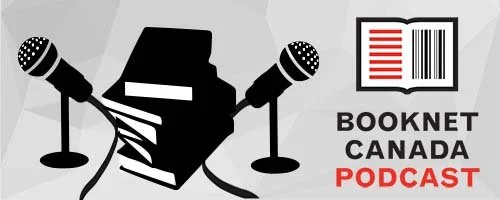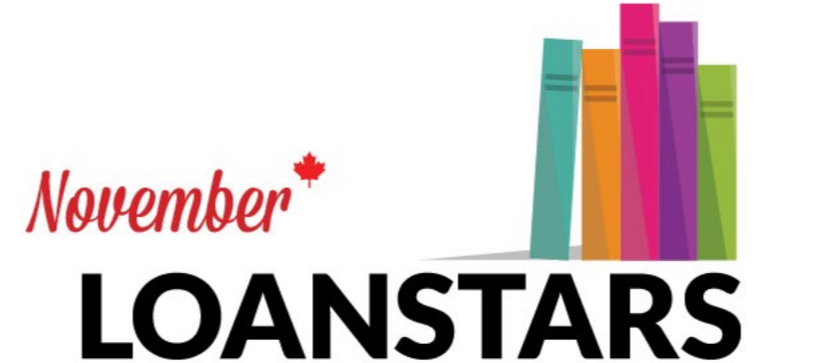This blog post continues a series where we will demonstrate how to highlight diverse book content using the Thema subject classification system. You can review our blog coverage of Thema here, and follow this series here.
It’s no secret that we at BookNet are major fans of the Thema subject classification system. While we still love BISAC, the dominant subject classification system in the North American book market, the love for Thema is real. While BISAC has made adjustments to its codelist to meet market demand for more granular coverage of diverse content, BISAC is intrinsically challenged due to its structure: its focus is to group books within a single North American market. Thema, with its qualifier lists can better handle diversity matters such as intersectionality in a way that BISAC is not capable of: its scope allows for a nuanced approach in describing individual books and provides better support for book discovery.
Quite simply put: when used correctly, Thema can communicate more granular and specific information about a book’s content that allows data senders and data recipients to share and display information about a book that represents a more diverse and inclusive range of content ripe for discovery by a marketplace that demands it.
Thema is overseen by EDItEUR, the international standards organization that also oversees the ONIX for Books metadata standard. When we hosted EDItEUR’s Chris Saynor at Tech Forum 2020, he shared some tips and tricks to reinforce what we already knew: Thema is far better equipped to support sharing diversity information than anything yet put forth in the market.
New to Thema? Learn more about the basics here.
Thema: real life examples
In 2020, EDItEUR released a comprehensive report on how to use Thema to communicate what we’ll call “diversity” attributes about a book. This was followed by what EDItEUR refers to as “worked examples,” where EDItEUR took real books in the market and made suggestions as to what specific Thema subject categories and qualifiers could be assigned to describe the book’s content. We're republishing these examples to show how flexible and adaptive Thema is, and to illustrate the effectiveness it offers as a solution to communicate so-called “diversity” attributes about the book's content.
Note: They don't necessarily represent the actual codes chosen by the publishers, and they're meant to stimulate discussion and reflection rather than being authoritative statements of the correct way to categorize the particular books listed.
Where possible, we’ve complemented EDItEUR’s examples with Canadian titles and categorized accordingly. The same caveats apply and are worth repeating: the BookNet-selected codes don't necessarily represent the actual codes chosen by the publishers, and they're meant to stimulate discussion and reflection rather than being authoritative statements of the correct way to categorize the particular books listed.
Example: The Clarion by Nina Dunic 🍁 (Invisible Publishing)
From independent publisher Invisible Publishing, The Clarion is, according to The Toronto Star: “A novel of small, graceful moments of epiphany, fleeting happenstance connections, like the plaintive sound of a trumpet in the dark. A wonderful, and promising, debut.” Invisible’s website promises that “Dunic’s debut novel captures the vague if hopeful melancholy of any generation that believes it was never “called” to something great” following “the literary realist traditions of Mavis Gallant and Alice Munro.” Their description of the book follows:
Peter plays the trumpet and works in a kitchen; Stasi tries to climb the corporate ladder and lands in therapy. These sensitive siblings struggle to find their place in the world, seeking intimacy and belonging—or trying to escape it.
A promising audition, a lost promotion, intriguing strangers and a silent lover—in rich, sensual scenes and moody brilliance, The Clarion explores rituals of connection and belonging, themes of intimacy and performance, and how far we wander to find, or lose, our sense of self.
Let’s explore how The Clarion could be categorized according to the Thema subject categorization. For this book, we have several points of reference, including publisher-provided keywords and BISAC subjects. The Clarion is even supported with a maximum list of four Thema codes provided in the ONIX record. Rather than code this book from scratch, we can review what the publisher has offered.
Publisher-provided keywords:
literary
sibling relationships
loneliness
artists/performers
intimacy
connection
belonging
Publisher-provided BISAC subjects:
FICTION / Literary
FICTION / City Life
FICTION / Family Life / Siblings
FICTION / World Literature / Canada / 21st Century
Publisher-provided Thema subjects:
FB - Fiction: general and literary
FBA - Modern and contemporary fiction: general and literary
FS - Family life fiction
FXR - Narrative theme: Sense of place
We’ll use these metadata elements, as well as the publisher-provided book description, to go a bit further and demonstrate additional theoretical subject categorization according to the Thema subject categories hierarchy, using EDItEUR’s online Thema browser.
Theoretical subject re-categorization:
FBA - Modern and contemporary fiction: general and literary
FS - Family life fiction
FXR - Narrative theme: Sense of place;
OR FXN - Narrative theme: Identity / belonging
First, we'll encourage the publisher to abandon the FB Thema code assignment in favour of the more-specific and granular FBA. Thema’s FB code is the same as using FICTION / General in BISAC and should be avoided – it provides no information and a more detailed Thema code is both available and expected. In fact, EDItEUR’s online Thema browser offers specific instructions on the FB (and misuse!) of the FB code:
Use for: works of literary and general non-genre fiction where either the date is unknown or where neither ‘classic’ nor ‘contemporary’ are applicable… Prefer: FBA or FBC wherever appropriate, and prefer a genre fiction code as the main subject when this is more appropriate
Done. Down with FB!
Next, we’d like to look at the “Sense of Place” Narrative theme code FXR as provided by the publisher. We’re not entirely convinced if this is the correct code to use.
The instructions for the “Sense of Place” Narrative theme require the coder use it for “fiction set in a real location where the setting very deeply pervades the work to the extent that it could not be set anywhere else.” Because of this gripping connection to a real place, Thema insists that the coder provide a Geography qualifier, which the publisher has not done in their ONIX record for the book.
This has stumped us! Working from information scrounged online, we know:
the book has a “City Life” BISAC;
it takes place in a metropolitan city;
that one of the characters takes public transit to work; and
that the author is from Scarborough, Ontario
We have, therefore, made the bold assumption The Clarion takes place in Toronto. In fact, it took us over half an hour to find a web page that identified the real place the book is set in — indeed, Toronto.
Perhaps the publisher’s omittance of a Geographic qualifier for the book and that it took us so long to confirm the setting indicates that the “Sense of Place” Narrative theme is not, forgive us, correct for this book. Would it take half an hour of internet research to identify a real place for a book where the “setting very deeply pervades the work to the extent that it could not be set anywhere”? We are not convinced.
Perhaps this is an opportunity to suggest a different Narrative theme, specifically the one pertaining to “Identity / belonging”. Once again, EDItEUR’s online Thema browser offers specific instructions on the FXN code:
Use for: fiction where the identity, the sense of, or search for, identity of whatever kind – social, cultural, religious, gender etc, as an individual or part of a group – of the main character(s) is the main, or one of the main themes of the story.
Recall we are only to provide one narrative theme, as we discussed with our last example. So it’s up to the publisher on how to handle this.
Regardless, if the book is set in Toronto and it is named, even if it’s not so critical as to suggest the Narrative theme, we would encourage the publisher add the Geography qualifier for Toronto, AKA “Southwestern Ontario: Greater Toronto Area”.
Accompanying qualifiers:
1KBC-CA-OSM Southwestern Ontario: Greater Toronto Area
Want more worked examples?
To read more examples as they are posted, subscribe to our weekly eNews or nab the RSS feed. And if you’re a Canadian publisher interested in submitting a Thema classification for one of your titles so it can be shared in this series, please get in touch with us!














The top selling books since SalesData started tracking 20 years ago!